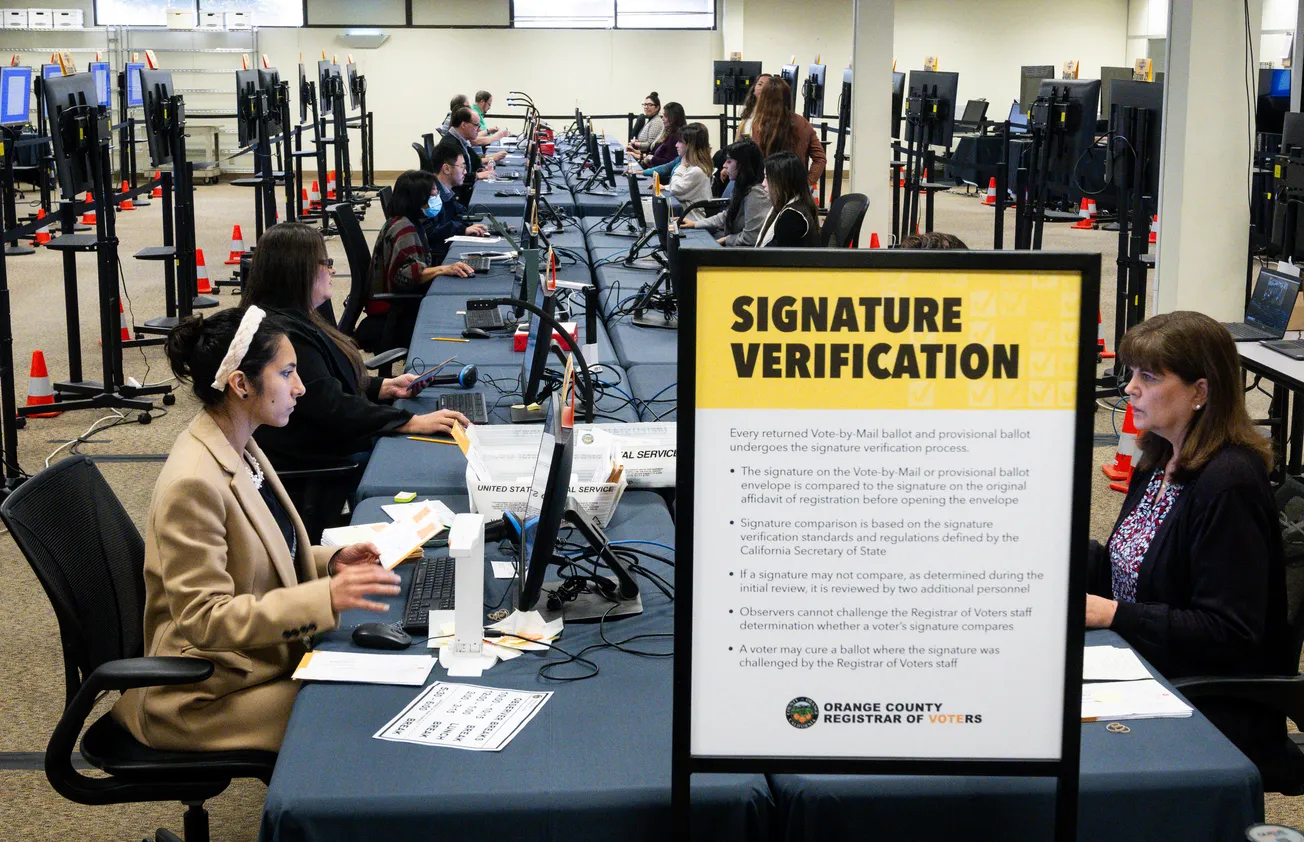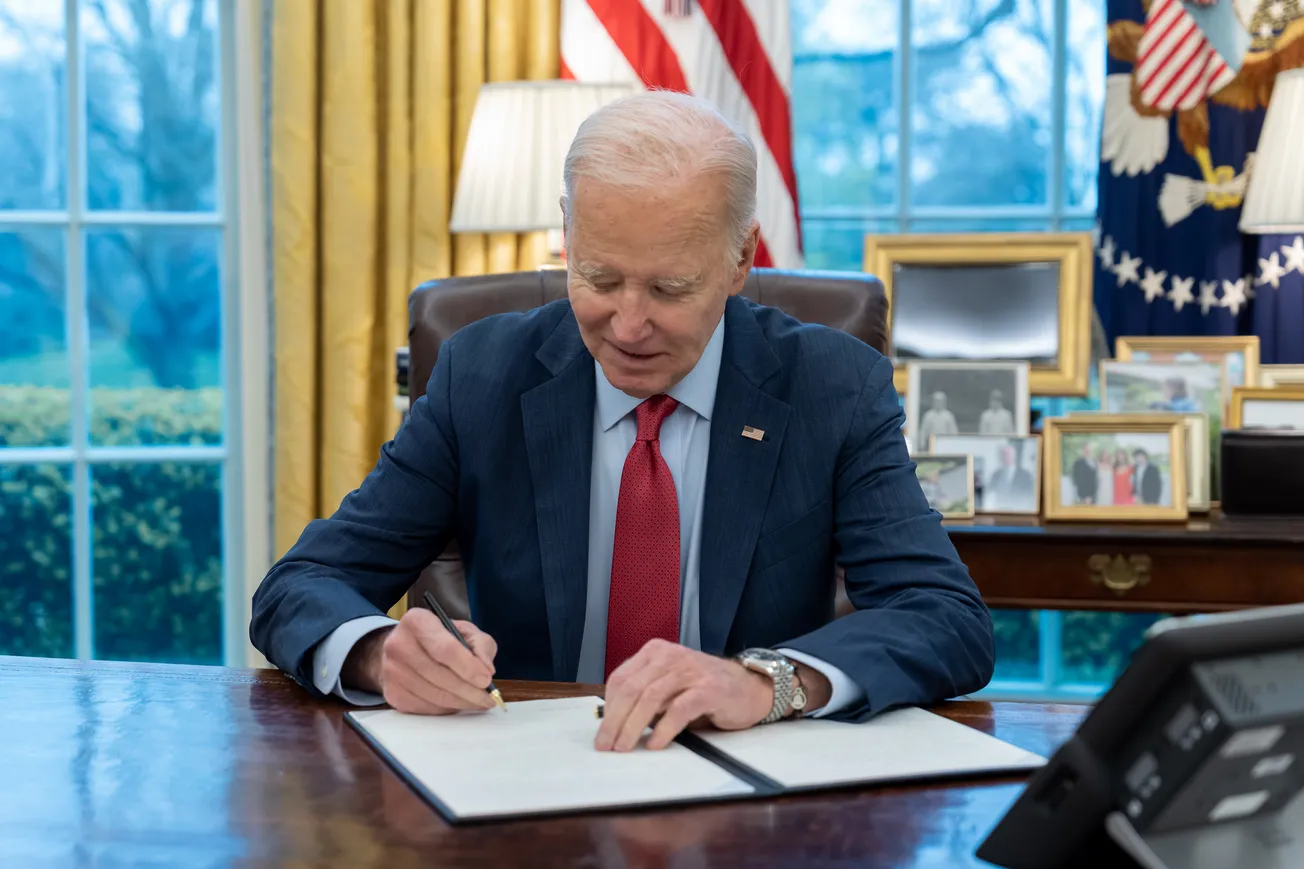In our editorial this week, we pointed out how Attorney General Merrick Garland, in his own words, is doubling resources of the elections section of the DOJ's Civil Rights division to challenge states and jurisdictions during this election season.
Garland believes that many states that have reformed electoral processes after 2020 and have tightened mail-in voting, the use of drop boxes, and voter ID requirements are racist. He regards these changes as discriminatory, burdensome, and unnecessary restrictions on access to the ballot.
It is unconscionable that the chief law enforcement officer of the United States is actively promoting election practices that could cause ineligible and non-citizen voters to participate in America's elections. America is a deeply divided nation. In 2020, liberal NPR analyzed the results and showed how close the first Trump-Biden match was: "Just 44,000 votes in Georgia, Arizona, and Wisconsin separated Biden and Trump from a tie in the Electoral College. Democrats and the liberal media insist that there was no evidence of fraud because the courts tossed over 60 challenges brought by Trump after the election, all on technical grounds.
However, when over 6.607 million votes were cast in these three battleground states, an error of just 0.6 percent can yield 44,000 votes and swing an election. We remain unconvinced that the election processes in these states during a raging pandemic when polling worker shortages were acute and numerous changes pushed through were so perfect that even a 0.6% percent error is implausible.
The price of security. Since 9/11, Americans have bought into the idea that a little bit of inconvenience (surveillance, screening, loss of privacy) is a price worth paying for security in an otherwise free country. It is why we have programmed ourselves to readily provide an ID card even for an activity as harmless as visiting a government building or paying taxes. Unfortunately, governments under both administrations have exploited the American psyche and expanded the surveillance state dramatically without a commensurate increase in our sense of security.
Mail-in ballots and ballot boxes offer numerous conveniences to people who cannot vote in person, either on election day or during the early voting calendar. Perhaps a voter is out of town, or people are sick or caring for someone at home who is ill and cannot leave home to exercise their precious right to choose their elected representatives. Indeed, until the 2018 election, in most states, voting by mail was known as "casting absentee ballots."
Voters could write, call, or email the local election office and request that an absentee ballot application be sent to them. The voters would then provide authentication information to the office, including name, a Social Security number, and some form of identification, such as a voter ID or driver's license number, and return the form, postage-paid.
Upon receiving the form, the voting district would cross-check the submitted information against their databases, confirm that the voter is authentic, and then send out a mail-in ballot to be used before election day. The district would cover the postage for returning the ballot, so the voter was again not burdened with that cost.
Every state had restrictions on when the mail-in ballot could be received for it to count. The gold standard would require voters to postmark their ballots well before election day and have them arrive by election day. When counting started at each polling station, the mail-in ballots would already have been authenticated against the requester's application form and would be ready to be counted.
Universal mail-in ballot. This type of voting is appropriate in states with extraordinarily low population densities. Most voters have been voting by mail in Alaska, Montana, Wyoming, Idaho, and Oregon for generations. These voters don't request mail-in ballots; the state automatically sends ballots to voters by election day.
The process makes sense. People living in small communities, such as single-stop and sign towns, may otherwise have to drive many hours to the nearest polling station, often in bad weather, to vote. The secretaries of state in each of these regions would find it cost-prohibitive to have a voting booth operational in all the far-flung communities. Voting by mail is an outstanding solution because these state secretaries put extra effort into validating the eligibility of each voter. When a voter moves to a different state or dies, these state secretaries work hard to capture that information in time for the next election so that voter rolls are kept up to date.
Changes in 2020. With Covid dictating significant lifestyle changes (virtual school, work from home), Democratic operatives such as Mark Elias manipulated state laws at the last minute. States with no experience with universal mail-in ballots began to implement the system. Philadelphia had to buy two $500,000 vote counting machines with election day fast approaching using funds from ‘Zuck Bucks.’ Connecticut, Delaware, Massachusetts, Missouri, New Hampshire, New York, Virginia, and South Carolina all enacted legislation to expand vote-by-mail eligibility in some way.
There were other concessions. California, Massachusetts, Mississippi, and New York extended their mail-in ballot receipt deadlines well after election day. Illinois allowed voters to send their ballots within 14 days of the election. In Nevada, ballots with unclear postmarks received by the third day following the election were deemed to have been postmarked on or before election day. If a postmark was missing in New York, the ballot was presumed to have been mailed before election day, no questions asked. So, if an unscrupulous poll worker teamed up with a corrupt postal worker and mailed in boxes of ballots after election day, they would all be counted as valid.
Michigan, New Jersey, New York, and Virginia all created or expanded notice and cure processes through new legislation. Vote curing occurs when the signature on a mail-in ballot is unclear or missing. Voting districts then notify voters and allow them ample time to correct these errors. The correction can happen even after election day. According to the National Conference of State Legislatures, 24 states require election administrators and officials to conduct this ballot-curing process. The remaining states typically do not count ballots that need correction.
To improve election integrity and ballot safety, American voters expect to go through a bit of inconvenience, such as appearing at a polling station after providing a valid ID or requesting an absentee ballot and completing its requirements. Universal mail-in voting and ballot boxes operated by party activists may make voting convenient - but they are not always secure and raise questions.
An official of the status of the Attorney General should weigh on the side of caution when it comes to election integrity. But in Garland, we have an official who wants to go the other way to attract and retain the minority vote. It is a sad commentary on what America has become.






